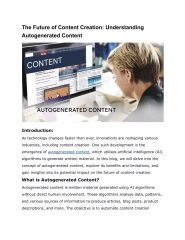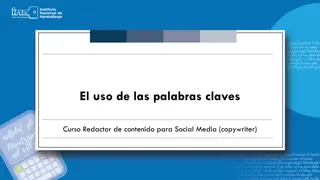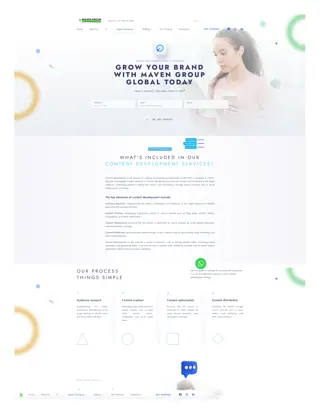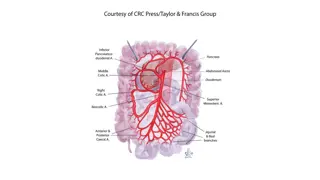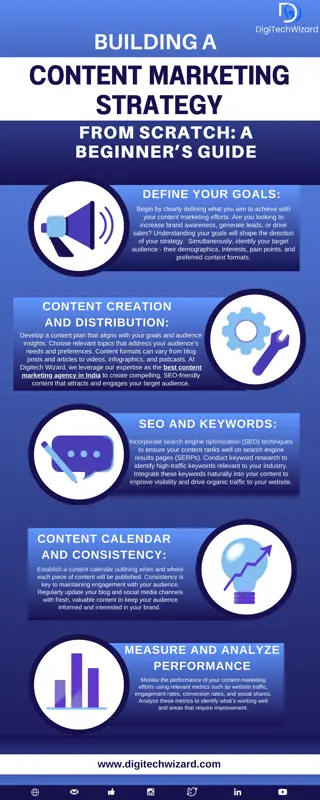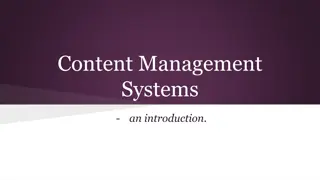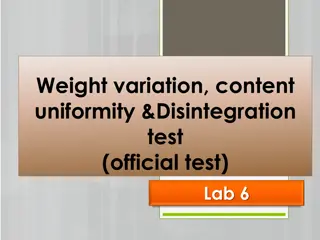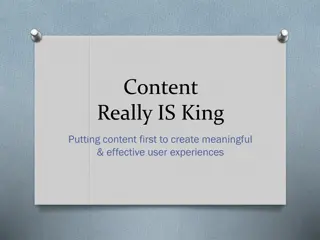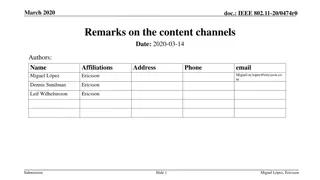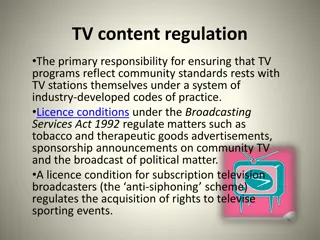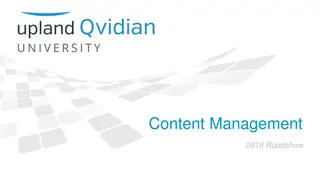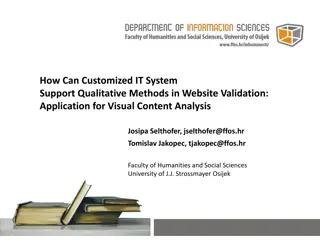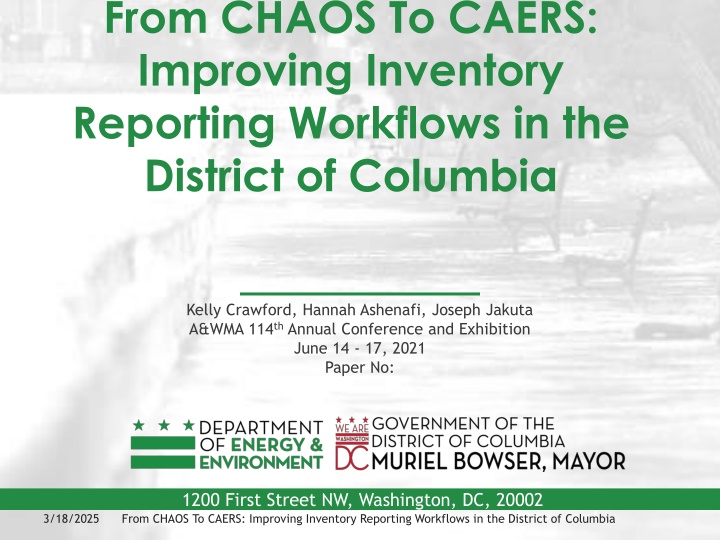
Improving Inventory Reporting Workflows in District of Columbia
Learn about the transition from chaos to CAERS, a system designed to streamline emissions inventory reporting in District of Columbia. The CAERS team is collaborating with DOEE to enhance reporting processes, reduce staff time, and digitize workflows. Discover the benefits, onboarding requirements, and future steps toward efficient inventory reporting.
Download Presentation

Please find below an Image/Link to download the presentation.
The content on the website is provided AS IS for your information and personal use only. It may not be sold, licensed, or shared on other websites without obtaining consent from the author. If you encounter any issues during the download, it is possible that the publisher has removed the file from their server.
You are allowed to download the files provided on this website for personal or commercial use, subject to the condition that they are used lawfully. All files are the property of their respective owners.
The content on the website is provided AS IS for your information and personal use only. It may not be sold, licensed, or shared on other websites without obtaining consent from the author.
E N D
Presentation Transcript
From CHAOS To CAERS: Improving Inventory Reporting Workflows in the District of Columbia Kelly Crawford, Hannah Ashenafi, Joseph Jakuta A&WMA 114thAnnual Conference and Exhibition June 14 - 17, 2021 Paper No: 1200 First Street NW, Washington, DC, 20002 From CHAOS To CAERS: Improving Inventory Reporting Workflows in the District of Columbia 1 3/18/2025
Abstract Title: From CHAOS To CAERS: Improving Inventory Reporting Workflows in the District of Columbia Authors: Topic: AM03-E Enterprise for the Environment: Challenges for the Combined Paper No: Key Words: CAERS, Emissions Inventory, Workflows Abstract: The Combined Air Emissions Reporting (CAER) team, is working closely with the District of Columbia Department of Energy and Environment (DOEE) to implement the next phase of the Combined Air Emissions Reporting System (CAERS) for the 2020 emissions inventory reporting cycle. The District of Columbia DOEE will be the second agency to begin using CAERS and will be able to provide a clear before and after snapshot of the onboarding process. By implementing CAERS, the DOEE will reduce the staff time spent working with facilities to perform quality assurance checks on the submitted data. DOEE staff began testing CAERS in 2020, and facility reporters in the District of Columbia will be using the system to report their 2020 National Emissions Inventory. District of Columbia DOEE staff will be able to review and test the emissions data in CAERS. Once review is complete, CAERS will transmit the data to EPA s Emissions Inventory System. Any toxics air emissions data reported to CAERS will also available on the Toxics Release Inventory system, TRI-MEweb. DOEE is also using this effort to replace its paper based emissions reporting system for Title V sources with an improved digital workflow. The CAER team is using this opportunity to improve CAERS based on lessons learned while building out CAERS with the pilot state, the Georgia Department of Natural Resources. The CAER team is also incorporating improvements to streamline the onboarding requirements in order to ease the registration process for future states, locals, and tribes. These advancements will aid in the onboarding of the Arizona Department of Environmental Quality, Montana Department of Environmental Quality, Pima County Department of Environmental Quality, and Omaha Air Quality Control Division. 3/18/2025 From CHAOS To CAERS: Improving Inventory Reporting Workflows in the District of Columbia 2
Overview Overview of DOEE Reporting Pre-2020 Workflow Benefits of CAERS to DOEE What is Needed to Onboard DOEE CAERS Onboading Next Steps 3/18/2025 From CHAOS To CAERS: Improving Inventory Reporting Workflows in the District of Columbia 3
Overview of DOEE Reporting In 2019: 46 Title V Facilities DOEE did not establish a synthetic minor program until 2020 No synthetic minor permits have been issued yet 31 Facilities reported to EIS 128 Units Facilities with only emergency generators are not reported DOEE retains consistent universe of sources in triennial and non-trienial years 3/18/2025 From CHAOS To CAERS: Improving Inventory Reporting Workflows in the District of Columbia 4
Pre-2020 Emissions Reporting Process Facility Compliance and Enforcement Branch (CEB) Monitoring and Assessments Branch (MAB) Submit Biannual Reports to DOEE Paper, PDF (though PDFs mostly scans of paper, so not machine readable) Many reports are in the same general format, about 10% differing Note some reports start with Jan data and some with Dec data creating additional discrepancies Review Submissions for Accuracy Ensure that all sources of emissions are included in calculations Review emission factors, including use of stack test results vs. AP-42 factors Ensure that fuel usage used for emission calculations corresponds with fuel certification reports Check for summation errors Prepare EIS Submission July to October manually enter Annual reports into Excel Python script to convert .xlsx files into .csv ready for relational DB import Import into in-house built MS Access DB In-house DB creates: Workbooks for QA Tables for import into EPA s Point EIS Bridge Tool Submit EIS Bridge CERS XML Output to EIS 3/18/2025 From CHAOS To CAERS: Improving Inventory Reporting Workflows in the District of Columbia 5
Pre-2020 Title V Submittals Up Close 3/18/2025 From CHAOS To CAERS: Improving Inventory Reporting Workflows in the District of Columbia 6
Pre-2020 Title V Compliance Up Close Sample Annual Report p. 459 3/18/2025 From CHAOS To CAERS: Improving Inventory Reporting Workflows in the District of Columbia 7
Pre-2020 EIS Submittal Up Close Data Entry Spreadsheet Example Fuel Usage Reports Manual Data Entry EIS Bridge Tool Example In-house DB Export/ Import 3/18/2025 From CHAOS To CAERS: Improving Inventory Reporting Workflows in the District of Columbia 8
Switching to CAERS DOEE Benefits Less error prone CAERS has robust error checking No errors from data entry and data transfer through DOEE Less time consuming Staff time not spent doing data entry and more time for: QA Analysis Development of other sectors After initial submission, sources have less data to enter for biannual reports More sources and pollutants submitted to EIS Emergency Generators HAPS DOEE only has two TRI sources, but this is also a nice additional benefit 3/18/2025 From CHAOS To CAERS: Improving Inventory Reporting Workflows in the District of Columbia 9
What DOEE Needed to Onboard Source Relationships Inform sources of the change Develop work arounds for submittals Annual reports due to DOEE (~March 1) prior to CAERS open (Mid-March) and time was needed for sources to be come familiar with the new system Still need to determine how to do semi-annual report Hold office hours and otherwise help sources troubleshoot Technology Develop an importation script to take inventory from CAERS to put into existing in-house QA tools 3/18/2025 From CHAOS To CAERS: Improving Inventory Reporting Workflows in the District of Columbia 10
Current Submission Status Chart Title 4 3 3 13 2 19 1 11 0 5 10 15 20 As of May 24, 2021 DOEE did not have a synthetic minor program in place at this reporting period, so all but one reported sources is part of our Title V program 3/18/2025 From CHAOS To CAERS: Improving Inventory Reporting Workflows in the District of Columbia 11
Issues Default Emission Rates Criteria emission rates not available for some SCCs for smaller boilers HAP emission rates not available for some SCCs (and quite onerous to add) Registration Sources have found the process of becoming a Certifier daunting and hard to complete Controls To date no sources have expressed issues with the new CERS structure Time Periods for Submission Monthly values not available, so all data needs to be aggregated annually No way to submit semi-annual reports as of yet Overall, the issues have been workable at this point, and the positives way outweigh the negatives 3/18/2025 From CHAOS To CAERS: Improving Inventory Reporting Workflows in the District of Columbia 12
Next Steps Work with EPA on few remaining issues: Ability to submit monthly values Ability to submit semi-annual reports Improve access to EPA default emission rates DOEE staff to spend more time on other inventories: Need to move towards MOVES3 for mobile Nonpoint inventories important but we had lacked resources Develop importation script to go from CAERS to in- house QA tools 3/18/2025 From CHAOS To CAERS: Improving Inventory Reporting Workflows in the District of Columbia 13
Summary Overall, the issues with CAERS have been workable at this point Positives outweigh the negatives EPA and the rest of the CAERS team have been great partners 3/18/2025 From CHAOS To CAERS: Improving Inventory Reporting Workflows in the District of Columbia 14
Questions? Kelly Crawford: kelly.crawford@dc.gov Hannah Ashenafi: hannah.ashenafi@dc.gov Joseph Jakuta: joseph.jakuta@dc.gov 3/18/2025 From CHAOS To CAERS: Improving Inventory Reporting Workflows in the District of Columbia 15

